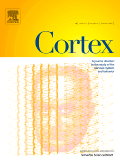
Frontiers in Neuroscience
Scope & Guideline
Bridging knowledge gaps in neuroscience.
Introduction
Aims and Scopes
- Neurobiology and Neurophysiology:
Research articles often explore the cellular and molecular mechanisms that underlie neural function, including synaptic transmission, plasticity, and neurodevelopment. - Neuroimaging and Brain Mapping:
The journal features studies employing advanced neuroimaging techniques, such as fMRI, PET, and EEG, to investigate brain structure and its relation to cognitive functions and disorders. - Neuropharmacology and Therapeutics:
Articles in this category discuss the effects of various pharmacological agents on brain function, including studies on drug mechanisms, therapeutic interventions, and drug repurposing for neurodegenerative diseases. - Neurodevelopmental and Neurodegenerative Disorders:
The journal publishes research focused on the pathophysiology and treatment of neurodevelopmental disorders like autism and neurodegenerative diseases such as Alzheimer's and Parkinson's. - Neural Engineering and Rehabilitation:
This scope covers innovations in neurotechnology, including brain-computer interfaces, neuromodulation techniques, and rehabilitation strategies for neurological conditions. - Psychiatric and Behavioral Neuroscience:
Research examining the neurobiological underpinnings of psychiatric disorders, emotional regulation, and behavior is a significant focus, exploring both clinical and experimental perspectives.
Trending and Emerging
- Neurotechnology and Brain-Computer Interfaces:
There is a significant increase in research related to neurotechnology, including brain-computer interfaces and neuromodulation techniques, reflecting the growing interest in developing assistive technologies for neurological rehabilitation. - Microbiome-Gut-Brain Axis:
Studies focusing on the interaction between the gut microbiome and brain function are gaining traction, emphasizing the role of gut health in neurological and psychiatric disorders. - Machine Learning and AI in Neuroscience:
The application of machine learning and artificial intelligence in analyzing neuroimaging data and predicting clinical outcomes is rapidly expanding, indicating a shift towards data-driven approaches in neuroscience research. - Neuroinflammation and Immune Response:
Research exploring the role of neuroinflammation and the immune system in neurological diseases is on the rise, highlighting its importance in understanding and treating various brain disorders. - Personalized Medicine Approaches:
There is a growing emphasis on personalized medicine in neuroscience, with studies focusing on individualized treatment strategies based on genetic, biomarker, and neuroimaging data. - Psychobiotics and Behavioral Interventions:
The exploration of psychobiotics and their effects on mental health and cognitive function is emerging as a new area of interest, linking gut health with psychological well-being.
Declining or Waning
- Traditional Neuropharmacology:
There has been a noticeable decrease in articles focused solely on classical neuropharmacology, particularly those that do not integrate novel therapeutic strategies or technologies. - Basic Neuroscience without Translational Applications:
Research that remains strictly within basic neuroscience without implications for clinical application or translational research appears to be waning, as the field increasingly emphasizes practical outcomes. - Static Neuroimaging Studies:
There is a decline in studies that rely solely on static imaging techniques without integrating dynamic functional assessments or longitudinal designs, as the field moves towards more comprehensive, integrative approaches. - Animal Models of Neurological Disorders:
The reliance on traditional animal models without innovative methodologies or novel insights into human conditions is decreasing, with a growing emphasis on human-relevant models and translational research.
Similar Journals

NEUROSCIENCE
Connecting scholars through groundbreaking neuroscience.NEUROSCIENCE, published by PERGAMON-ELSEVIER SCIENCE LTD, has established itself as a reputable journal in the field of neuroscience since its inception in 1976, continuing its contributions through 2024. With a Category Quartile ranking of Q2 in Neuroscience (miscellaneous) and a Scopus Rank of #41 out of 113, this journal represents a critical platform for the dissemination of innovative research and insights. Although it currently does not offer open access options, NEUROSCIENCE aims to advance our understanding of the nervous system by publishing high-quality original research, reviews, and methodological articles, thereby engaging a comprehensive audience of researchers, professionals, and students alike. With an impact factor that reflects its significance in the scientific community, this journal remains a go-to source for cutting-edge discoveries and scholarly discussions in the dynamic field of neuroscience.

Frontiers in Human Neuroscience
Connecting Minds: Where Neuroscience Meets Behavioral ScienceFrontiers in Human Neuroscience is a premier open access journal published by FRONTIERS MEDIA SA, dedicated to advancing the understanding of the complexities of human neuroscience. With an ISSN of 1662-5161, the journal has established its prominence in various fields, achieving a Q2 ranking in categories such as Behavioral Neuroscience, Neuropsychology and Physiological Psychology, and Psychiatry and Mental Health as of 2023. Since its inception in 2008, Frontiers in Human Neuroscience has consistently contributed to the scholarly dialogue by offering a platform for innovative research that bridges the gap between neuroscience and behavioral science. The journal's rigorous peer-review process and commitment to open access ensures that findings are readily available, promoting collaboration and progress within the academic community. With an impact on neuroscience disciplines, it stands at the forefront of the field, inviting researchers, professionals, and students alike to engage with cutting-edge studies and developments. The journal's address is located in Lausanne, Switzerland, where it continues to flourish as a hub for neurobiological exploration.

NEUROBIOLOGY OF LEARNING AND MEMORY
Pioneering Research on Memory and Learning DynamicsNeurobiology of Learning and Memory is a prestigious journal dedicated to the exploration of the neural mechanisms underlying learning and memory processes. Published by Academic Press Inc Elsevier Science, this journal boasts a strong reputation within the field, as evidenced by its impressive impact factor and high quartile rankings in multiple categories, including Q1 in Behavioral Neuroscience and Q2 in Cognitive Neuroscience. Having provided a platform for groundbreaking research since its inception in 1995, the journal aims to disseminate influential findings that further our understanding of cognitive processes, shaped by robust empirical studies and theoretical developments. Researchers and professionals in neuroscience, psychology, and related disciplines will find invaluable insights and advancements that underscore the journal's commitment to fostering knowledge and innovation within these fields. While it currently operates under a subscription model, its comprehensive coverage of crucial topics positions it as a vital resource for those engaged in the intricate study of learning and memory.

CORTEX
Illuminating the Complexities of the Human BrainCORTEX is a premier international journal published by Elsevier Masson, focusing on the cutting-edge areas of cognitive neuroscience, psychology, and neurology. With an impressive impact factor that places it in Q1 quartiles across multiple categories such as Cognitive Neuroscience and Neuropsychology, this journal serves as a vital resource for researchers, clinicians, and students alike. Established in 1964, CORTEX has continued to excel in disseminating high-quality scholarly work, offering insights that significantly enhance our understanding of the brain's functioning and behavior. Although not an open-access publication, it provides various access options to ensure the dissemination of knowledge is as wide-reaching as possible. As the field of cognitive psychology evolves, CORTEX remains at the forefront, fostering an environment for interdisciplinary collaboration and innovation. Researchers seeking to stay engaged with the latest advancements will find CORTEX an indispensable tool for their professional development.

Molecular Brain
Unraveling the Mysteries of Neural Function at the Molecular LevelMolecular Brain is a prestigious open-access journal published by BMC, dedicated to advancing the field of neuroscience with a particular focus on cellular and molecular mechanisms. Since its inception in 2008, the journal has been committed to disseminating high-quality research that explores the intricate workings of the brain, particularly in areas related to cellular and molecular neuroscience. Located in the heart of London, England, Molecular Brain has garnered significant recognition in the academic community, boasting a 2023 categorization in the Q2 quartile for both Cellular and Molecular Neuroscience and Molecular Biology, reflecting its growing influence and relevance in these fields. With its Scopus ranks placing it in the top 32% and 38% of its respective categories, the journal serves as an essential platform for researchers, professionals, and students alike, encouraging collaboration and knowledge-sharing through its accessible online format.

Journal of Neurophysiology
Illuminating the interplay of physiology and neuroscience.The Journal of Neurophysiology, published by the American Physiological Society, stands as a cornerstone in the exploration of neural function and its physiological implications since its inception in 1945. With an ISSN of 0022-3077 and an E-ISSN of 1522-1598, this esteemed journal not only holds a Q2 ranking in both the Neuroscience (miscellaneous) and Physiology categories for 2023, but also features prominently in the Scopus rankings, reflecting its significant contribution to the fields of biochemistry, genetics, molecular biology, and general neuroscience. Although the journal does not currently offer open access options, it provides peer-reviewed research that generates critical insights into the functioning of the nervous system, appealing primarily to researchers, professionals, and students eager to advance their understanding of neurophysiological processes. With its commitment to high-quality, impactful research, the Journal of Neurophysiology is a vital resource for anyone looking to stay at the forefront of neural science research.

eNeuro
Empowering discovery with accessible neuroscience research.eNeuro is a prominent open-access journal published by the Society for Neuroscience, dedicated to advancing the field of neuroscience through the dissemination of high-quality research. Launched in 2015, it reflects its commitment to accessibility by providing a platform for innovative studies and advancements in neurobiology. The journal holds a strong reputation, achieving a Q1 ranking in Medicine (miscellaneous) and a Q2 in Neuroscience (miscellaneous) as of 2023, with Scopus rankings placing it at #56 out of 113 in General Neuroscience, marking it in the 50th percentile. With its convergence to cover articles from 2014 to 2024, eNeuro continues to serve as a vital resource for researchers, professionals, and students alike, offering a comprehensive hub for the latest discoveries and theoretical developments in neuroscience. As part of its mission, eNeuro aims to foster collaboration and inspire the academic community with openly accessible content, making significant contributions to scientific discourse.

Brain and Behavior
Innovating Insights into Brain-Behavior Relationships.Brain and Behavior is a premier open-access journal published by WILEY, dedicated to advancing the field of Behavioral Neuroscience. With its ISSN 2162-3279, the journal has established itself as a vital resource for researchers, professionals, and students alike, fostering the dissemination of cutting-edge research since its inception in 2011. Renowned for its rigorous peer-review process, it enjoys a commendable Q2 ranking within the field, reflecting its impactful contributions and relevance in the scientific community. The journal not only emphasizes innovative studies that bridge behavioral science and neuroscience but also serves as a platform for diverse methodologies and interdisciplinary approaches. Accessible [open access](https://onlinelibrary.wiley.com/journal/21623279), Brain and Behavior invites submissions that explore the neural mechanisms underlying behavior, aiming to engage a global audience eager to expand the boundaries of knowledge in this dynamic field. Positioned in the heart of the United States, at 111 River St, Hoboken, NJ, it is strategically placed to collaborate with leading institutions and researchers worldwide.

Annual Review of Neuroscience
Connecting Research and Insight in NeuroscienceThe Annual Review of Neuroscience, published by Annual Reviews, is a premier journal that has been at the forefront of neuroscience research since its inception in 1978. With an ISSN of 0147-006X and E-ISSN 1545-4126, this leading academic journal boasts a remarkable impact factor, placing it in the prestigious Q1 category in Neuroscience (miscellaneous), with an impressive Scopus ranking of 4 out of 113 and a stellar 96th percentile in general neuroscience. Focused on publishing comprehensive and authoritative review articles, the Annual Review of Neuroscience aims to synthesize and critically evaluate the latest advances in the field, making it an indispensable resource for researchers, professionals, and students alike. While it does not offer open access, the insights and discoveries highlighted in its issues are crucial for those dedicated to understanding the complexities of the nervous system and driving forward innovative research. With a commitment to excellence and a forward-looking perspective, this journal continues to shape and influence the future of neuroscience.

CEREBRAL CORTEX
Advancing knowledge in cortical neuroscience.CEREBRAL CORTEX, published by Oxford University Press Inc, is a premier journal dedicated to advancing the field of neuroscience, specifically focusing on the cellular, molecular, and cognitive aspects of cortical structure and function. With an impressive impact factor that situates it in the top quartile (Q1) of its categories for 2023, this journal holds significant relevance for researchers and professionals interested in the latest discoveries and methodologies in both Cognitive Neuroscience (ranked #31 out of 115) and Cellular and Molecular Neuroscience (ranked #48 out of 97). Operating without an open access model, it ensures rigorous peer review and dissemination of high-quality research from across the globe. Since its inception in 1991, CEREBRAL CORTEX has established itself as a critical platform for educators and inventors, pushing the boundaries of knowledge in understanding brain function and its implications for behavior. Researchers and students alike will find this journal an invaluable resource for both foundational and cutting-edge studies in neuroscience.